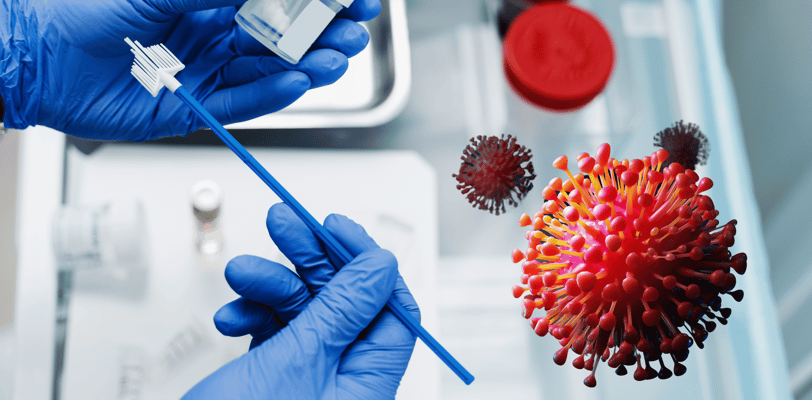How HMPV Spreads and Who Is Most at Risk
Human Metapneumovirus (HMPV) spreads primarily through respiratory droplets when an infected person coughs, sneezes, or talks. It can also spread via direct contact with contaminated surfaces or close personal interactions. Those most at risk include young children, the elderly, and individuals with weakened immune systems or chronic respiratory conditions.
1/8/20252 min read


How HMPV Spreads and Who Is Most at Risk
Human Metapneumovirus (HMPV) is a respiratory virus that is a common cause of illnesses ranging from mild colds to severe respiratory infections. Despite being less well-known than other respiratory viruses like influenza or RSV, HMPV is a significant public health concern. In this blog, we’ll explore how HMPV spreads and identify the groups most at risk of severe illness.
How HMPV Spreads
HMPV is highly contagious and spreads primarily through:
1. Direct Contact: When an infected person coughs or sneezes, respiratory droplets containing the virus can land on the hands, face, or surfaces. Touching these contaminated areas and then touching your face can lead to infection.
2. Airborne Transmission: Inhalation of virus-laden droplets suspended in the air, especially in crowded or poorly ventilated spaces, can result in infection.
3. Surface Transmission: HMPV can survive on surfaces for several hours. Touching contaminated objects like doorknobs, toys, or mobile phones and then touching the eyes, nose, or mouth increases the risk of infection.
4. Close Contact: Spending time near an infected person, such as in shared living spaces or classrooms, facilitates the spread of the virus.
The virus is most contagious during the first few days of illness when symptoms are at their peak.
Who Is Most at Risk?
While anyone can contract HMPV, certain groups are more vulnerable to severe illness:
1. Young Children
Infants and toddlers are particularly susceptible to HMPV due to their developing immune systems. HMPV is a leading cause of bronchiolitis and pneumonia in children under five.
2. Elderly Individuals
Older adults, especially those over 65, are at higher risk of severe respiratory complications. Age-related changes in immunity make it harder for the body to fight off infections.
3. People with Underlying Health Conditions
Individuals with chronic respiratory diseases, such as asthma or chronic obstructive pulmonary disease (COPD), are more likely to experience severe symptoms. Heart disease, diabetes, and other chronic illnesses can exacerbate the impact of HMPV.
4. Immunocompromised Individuals
People undergoing chemotherapy, organ transplant recipients, or those with HIV/AIDS have weakened immune systems, making them more prone to severe HMPV infections.
5. Healthcare Workers and Caregivers
Those in close contact with vulnerable populations are at risk of both contracting and spreading the virus.
Preventing the Spread of HMPV
Reducing the risk of HMPV infection requires a combination of personal hygiene and public health measures: Practice Good Hygiene: Wash hands frequently with soap and water for at least 20 seconds. Use alcohol-based hand sanitizers when soap isn’t available. Cover Coughs and Sneezes: Use a tissue or your elbow to prevent respiratory droplets from spreading. Clean and Disinfect Surfaces: Regularly sanitize high-touch surfaces, especially during outbreaks. Avoid Close Contact: Stay home when feeling unwell and avoid contact with sick individuals. Wear Masks in High-Risk Settings: Masks can help reduce the spread of respiratory droplets in crowded or healthcare environments.
Conclusion
HMPV is a significant cause of respiratory infections worldwide, with young children, the elderly, and immunocompromised individuals being the most at risk. Understanding how the virus spreads and adopting preventive measures can help reduce the impact of HMPV on vulnerable populations. By raising awareness and promoting good hygiene practices, we can collectively mitigate the risks associated with this virus.
Stay informed, stay protected!
